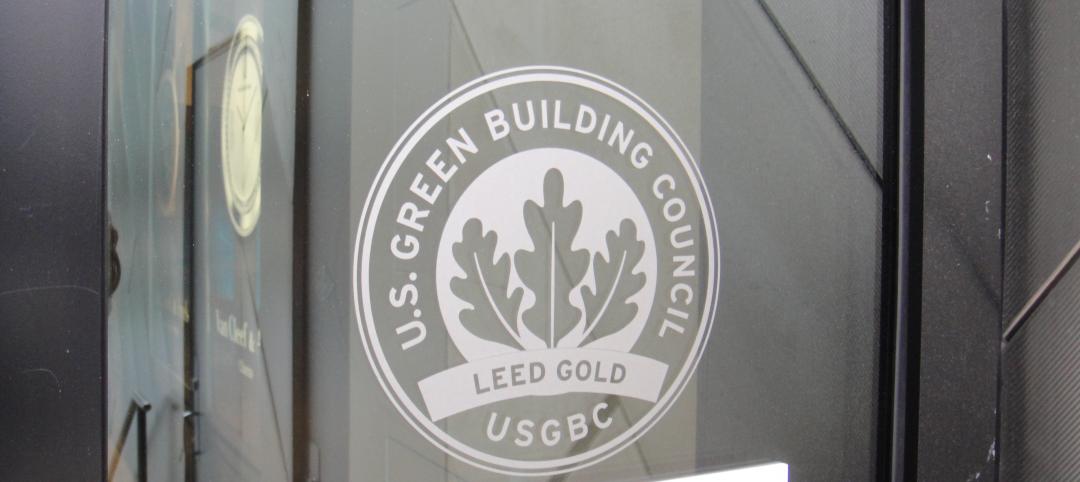Green Business Certification Inc. (GBCI) launched its newly acquired SITES rating system, the most comprehensive program and toolkit for developing sustainable landscapes.
SITES was developed through a collaborative, interdisciplinary effort of the American Society of Landscape Architects, The Lady Bird Johnson Wildflower Center at The University of Texas at Austin, and the United States Botanic Garden. The rating system can be applied to development projects located on sites with or without buildings, ranging from national parks to corporate campuses, streetscapes and homes, and much more.
“Landscapes knit together the fabric of our communities,” said Rick Fedrizzi, CEO, GBCI. “And sustainable landscapes are critical in their ability to reduce water demand, filter and reduce storm water runoff, provide wildlife habitat, reduce energy consumption, improve air quality, improve human health, and increase outdoor recreation opportunities. SITES is an important addition to our toolkit, and GBCI appreciates this opportunity to support this additional contribution to healthy, thriving communities and neighborhoods.”
The SITES rating system uses progressive industry standards for landscape design and incorporates additional recommendations from technical experts in the fields of soil science, botany and horticulture, hydrology, materials, and human health and well-being.
“It is exciting to see years of work developing and field testing SITES culminate with the availability of this rating system,” said Fritz Steiner, FASLA, dean of the School of Architecture at The University of Texas at Austin. “The depth and breadth of approaches that were implemented by pilot projects demonstrates how valuable SITES can become for revolutionizing our relationships with built landscapes.”
“Landscape architects and members of all the related design and planning fields know that the issues addressed in SITES are increasingly important to creating livable and resilient communities,” said Nancy C. Somerville, executive vice president and CEO of the American Society of Landscape Architects (ASLA). “GBCI will take SITES to the next level and ensure its future growth and influence, and ASLA is pleased to provide continued education and communications support.”
“SITES is a powerful tool for enhancing built landscapes precisely because it puts ecosystem services, the benefits humans derive from functional ecosystems, front and center,” said Ari Novy, executive director of the United States Botanic Garden. “This approach will help maximize our collective ability to create sustainable and healthy communities. Making SITES available through GBCI will be a great boon for the quality and resilience of our built landscapes.”
The SITES rating system uses progressive industry standards for landscape design and incorporates additional recommendations from technical experts in the fields of soil science, botany and horticulture, hydrology, materials, and human health and well-being. Some of the credits for sustainable landscape performance have been developed in alignment with similar credits in the U.S. Green Building Council’s LEED (Leadership in Energy and Environmental Design) rating system, the world’s most widely used green building program.
SITES, originally modeled after LEED, includes best practices in landscape architecture, ecological restoration, and related fields, as well as knowledge gained through peer-reviewed literature, case-study precedents, and projects registered in the SITES pilot program.
“Adding SITES to GBCI’s rapidly growing list of certification systems and credentials it supports not only expands GBCI’s capabilities, but it also helps us to further our mission to enact global sustainable change,” said Mahesh Ramanujam, president, GBCI.
SITES draws on the experience gained from a two-year pilot program involving more than 100 projects. Forty-six of these pilot projects have achieved certification, including landscape projects at corporate headquarters, national and city parks, academic campuses and private homes.
Interested project teams can visit sustainablesites.org for more information and to register their projects and access the SITES v2: Rating System For Sustainable Land Design and Development, a guide that provides best practices, performance benchmarks and tools for creating ecologically resilient landscapes and rewards successful projects through certification.
The Wildflower Center and ASLA will help GBCI create and implement SITES credentialing and certification offerings such as training project reviewers and will provide educational opportunities for pursuing SITES certification. GBCI owns exclusive rights to the SITES Rating System, its publications and trademarks.
Related Stories
Green | Nov 23, 2015
Copenhagen designer offers assembly kit for a two-story hydroponic urban farm
Founders of Human Habitat believe their Impact Farm could grow up to six tons of produce per year.
Sponsored | Green | Nov 20, 2015
A century-old furniture factory gets a living wall biofilter for better air
During renovations, the team integrated the biofilter into the new HVAC system to provide clean air directly to the offices
Green | Nov 19, 2015
USGBC names 2016 board of directors and advisory council
New governance structure will have two leadership bodies.
BIM and Information Technology | Nov 18, 2015
AIA: Energy modeling key to reaching carbon neutrality in buildings
Energy modeling allows architects to be more ambitious with energy-saving in their design projects.
Green | Nov 18, 2015
Green Seal expands standard for paints, coatings, stains, and finishes
This new edition of GS-11 includes floor coatings, concrete and masonry sealers, and fire resistive coatings, in addition to the paints, primers, anti-corrosive coatings, and reflective coatings previously covered.
Green | Nov 17, 2015
DOE launches new data collaborative to help cities and states boost building efficiency
The SEED Standard will help manage, standardize, share performance data.
Mixed-Use | Nov 16, 2015
Italian architect designs vertical forest with prefab units by BuroHappold
Cantilevered planters will host cedar trees and other plants hundreds of feet above ground.
Green | Nov 16, 2015
USGBC Working Group approves new guidance for LEED Materials & Resources Credit 4
Helps product manufacturers offer insight into material and supply chain sustainability
Green | Oct 30, 2015
First WELL-certified city district will be built in Tampa, Fla.
The plan calls for the construction of a $2 billion, 40-acre urban mixed-use development, where all buildings will pursue WELL Certification.
Sponsored | Green | Oct 22, 2015
Six-story living wall improves building performance at University of Ottawa
Benefits of the living wall include dust control and sound abatement.
















